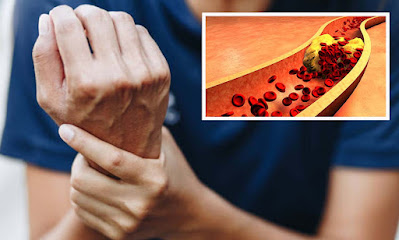Alarming Symptoms of High Cholesterol
There are no specific symptoms of high cholesterol. However, your risk of developing heart disease is higher when your cholesterol level is high. High levels of cholesterol, or triglycerides, in your blood are a serious concern. In addition to lowering your cholesterol levels, you should avoid smoking, processed foods, and fast food. Smoking increases your risk for heart disease and blood vessel problems.
There are no symptoms of high cholesterol
High cholesterol is a common health condition, but many people do not experience symptoms. While it can lead to coronary artery disease (CAD), the disease does not have any symptoms in its early stages. If you suspect that you have high cholesterol, your doctor will perform a simple blood test to determine the level. You may be unaware of your high cholesterol until you begin experiencing symptoms, such as chest pain, shortness of breath, and low energy.
A number of lifestyle changes can lower your cholesterol levels naturally without medications. Some of the best choices are diet and exercise. To start, try to eat more heart-healthy foods. Avoid red meat and high-fat dairy products, and add more soluble fiber to your diet. Ideally, you should aim to eat two portions of fatty fish a week. You should also do some regular aerobic exercise.
Triglyceride levels increase your risk of heart disease
Triglyceride levels in the blood are a major indicator of medicine for cholesterol and high levels can increase your risk of heart disease. However, by making lifestyle changes and making certain dietary choices, you can lower your triglyceride levels. Triglycerides are the type of fat that is stored in the body's fat cells and play an important role in the body's metabolism. They help the body digest food and produce hormones.
Triglyceride levels are measured in the blood as part of a complete blood test. Although it's a good idea to check your levels every four to six years, older adults and people with heart disease risk factors should be tested more often. Women and men aged 45 and older should have a cholesterol test once a year. Young children should be tested when they're between nine and eleven and when they turn 21. If your triglyceride levels are too high, they can lead to a serious condition called pancreatitis, which is life-threatening.
Exercise lowers cholesterol levels
Whether you're looking to improve your cholesterol levels or want to prevent high cholesterol from affecting your life, exercising is an essential part of your health regimen. The federal government recommends 150 minutes of moderate-intensity exercise each week and 75 minutes of vigorous activity. However, even short bursts of activity can reduce your cholesterol levels. Researchers have found that even five minutes of exercise each day can help you lower your cholesterol.
A recent report by the American Heart Association emphasized the importance of exercising for people with high cholesterol or high blood pressure. The AHA says that even moderate exercise can lower cholesterol levels and improve symptoms of high cholesterol. Unlike other types of exercise, it's not necessary to join a gym and take up a weight-loss program. Instead, people should engage in moderate physical activity such as brisk walking or jogging.
Smoking
According to the American Heart Association, smoking increases your risk of heart disease and stroke by two to four times. It also decreases HDL cholesterol, which is important to protect the heart and arteries from plaque. Furthermore, smoking damages the artery walls, increasing the risk of heart disease and stroke. Smoking also raises your blood pressure and LDL cholesterol levels. It also increases the likelihood of blood clots and increases inflammation.
According to a study, children who were passive smokers had lower levels of HDL cholesterol than children who were not exposed to cigarette smoke. This was in spite of the fact that these children were younger than their nonsmoking peers. Both groups had lower levels of HDL cholesterol than the population's average for their age. While this difference was not statistically significant, the authors caution that it is important to remember that this finding should not be interpreted as a definitive finding.
Xanthoma is a symptom of high cholesterol
Xanthoma is a skin rash that is characterized by cholesterol medicines surrounded by an erythematous halo. It is a sign of severe hypertriglyceridemia, which can be caused by primary genetic mutations or secondary conditions such as uncontrolled diabetes, obesity, or alcohol use. Xanthoma can be a clinical indicator of systemic diseases, such as cardiovascular disease and pancreatitis.
Although xanthomas are not dangerous, they are not entirely preventable. It is important to follow your doctor's advice and have regular follow-up appointments. If you have high cholesterol or blood lipid levels, your doctor may prescribe medicine to help regulate your cholesterol levels and decrease the risk of xanthomas. Medications and lifestyle changes may also be suggested. Once blood lipid levels are controlled, xanthomas will usually go away.




Comments
Post a Comment